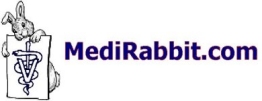Excessive secretion of saliva and coughing
Esther van Praag, Ph.D.
|
MediRabbit.com is
funded solely by the generosity of donors. Every
donation, no matter what the size, is appreciated and will aid in the
continuing research of medical care and health of rabbits. Thank you |
|
Excessive saliva secretion is
primarily observed after food intake by the rabbit. Saliva may appear
translucent, clear or greenish if vegetables were consumed, or may take on
the color of pellets. On occasion, the appearance of the saliva can be
described as foamy. This problem is frequently related to the presence of a
foreign body, such as a piece of hay stuck in the gum or between two cheek
teeth, or a plant thread, e.g. after eating a celery branch, fennel, or
parsley. The rabbit displays clear signs of distress when attempting to
dislodge the foreign object. Irritation can result in excessive salivation. Excessive salivation is often linked to
a dental problem and to pain : · Presence of molar
spurs on cheek teeth, even when tiny; · A split or
fractured cheek tooth; · An overgrown
cheek tooth, that may deviate from the regular alignment of the cheek teeth,
causing a deformation of the palate; · Misalignment of
cheek teeth; · Malocclusion of
cheek teeth, with irregular surfaces of the crowns, giving a « step
mouth » aspect. In older rabbits, this problem can relate to acquired
dental disease (ADD). A palpable swelling along the jaw bone
may be present in some cases. Its presence indicates an infection at the root
level of teeth, commonly referred to as an abscess. Gum ulceration or
secondary tongue lesions are occasionally observed. Rabbits cannot vomit. The excessive
salivation is not related to the content of the stomach. Paralysis of the
larynx can result in excessive salivation. The food that has been ingested,
along with saliva, accumulates in the esophagus. This is then regurgitated
through the oral cavity and nose. This condition, known as gagging syndrome,
has been observed in horses, another herbivorous animal whose medicine shares
similarities with that of rabbits. There have been a few suspected cases in
rabbits. Should the regurgitated saliva be inhaled, it has the potential to
cause pneumonia. In some cases, an abnormal elongation
or drop of the palate has been suspected, linked to the presence of the
parasite Encephalitozoon cuniculi. To date, this has not been
confirmed in a clinical setting. It is important to note that excessive
salivation is only rarely linked to primary respiratory problems or
pneumonia. However, if saliva or chewed food enter the airways, pneumonia can
develop. It is important to be vigilant for the
development of secondary bacterial or fungal infections, which can occur
beneath the chin or on the dewlap. Diagnosis Following the administration of anesthesia
to the rabbit, the oral cavity should be carefully inspected. Radiographs and
CT scans are essential tools in the diagnostic process for identifying and
locating dental abscesses, as well as bone infections (osteomyelitis,
widening of the roots, abnormal bending of the molar, or other issues located
beneath the gum line). Treatment The treatment plan will be based on
the underlying cause and the nature of the dental problems. In the case of an infection, it is
essential to administer antibiotics to the rabbit. It is imperative to administer
analgesics to the rabbits, as these animals are unable to cope with pain
effectively. If a rabbit is refusing to eat, assisted feeding should be
initiated by administering pureed food. Examples of suitable food include
pellets that have been ground with a coffee grinder and mixed with water, or
a nutritive solution that has been specially formulated for rabbits. Fresh vegetables and hay can be cut into small
pieces. It is possible to soften hay by wetting it. After a few hours, the
hay should be removed because mold and bacteria develop rapidly on wet hay
kept at room temperature. |



